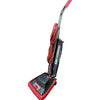
Central Vacuum System Repairs Fairfax
Does your central vacuum system needs repair or service? Call Acevacuums 703 997 9292 X 3 to fix an appointment to address your need.
We service and install most brand.
We install central vacuum systems in new construction and existing built homes.
Installation takes less than 1 day and no structural modifications are necessary.
Hide-A-Hose is a space-saving retractable hose system that stores up to 50 feet of central vacuum hose in the tubing within the wall. No more carrying the hose up and down stairs or from room to room. All you carry is the lightweight hose handle, wand and cleaning tool
We at Acevacuums recommend that all central vacuum systems be serviced about every 3-4 years to provide you with optimal performance and with regular maintenance it will extend the life of your system.
FAQ:
Central vacuums are the best way to clean but are the least known way of cleaning. Let us help you grasp this simple, affordable concept and get you a free price quote. Installation takes less than a day and any home can have it installed
Q: Why should I install a central vacuum?
A: Installing a central vacuum system in your home not only will save you time and money, but it’s also good for the environment. Besides the fact that portable vacuum cleaners need to be replaced every few years, these used appliances often end up in landfills. In addition, a central vacuum reduces allergies and is quiet, versatile, and cost effective: most homeowners recoup their investment once the home is sold.
Q: What’s the difference between a portable vacuum and a central vacuum?
A: These are completely different vacuuming experiences. First, because the central vacuum is a built-in appliance, you’ve eliminated the most annoying features of a portable vacuum cleaner: noise and smell. Second, dust and pollutants get transported out of the living area with a central vacuum system and are not re-circulated back into the living area through the exhaust as with a portable vacuum. Finally, instead of wrestling with a heavy machine or a cumbersome hose as is the case with a portable system, you are vacuuming with a single hose, enabling you to clean your home freely and easily wherever you like.
Q: How much is this going to set me back?
A: The average central vacuum cost for a system installed in a home less than 3,000 square feet varies and can cost between $1,200 to $3,000. Cost variations depend on the number and style of wall inlets, the size of the power unit and the hose, the accessory kit, and any optional extras. Most dealers offer free estimates and demonstrations, so you will know exactly what the installation entails. Keep in mind that a vacuum system can be installed in both new construction and existing homes without demolishing interior walls, so there’s no hidden construction costs.
Q: Does the vacuum’s power diminish the farther away from the source the hose is used?
A: The motors in the stationary vacuum unit in the garage or basement are larger and more powerful than portable and canister vacuums. For this reason, the suction power remains strong no matter where you are vacuuming inside the house.
Q: Can Central Vacuum Systems be installed in existing homes without demolishing interior walls?
A: You never have to break walls or do drywall repair when installing a central vacuum, even in pre-existing homes. The inlet valve on the wall conceals the only hole needed. For less work, the pipe can be run behind a wall instead of inside of it. When installed this way, the pipe is run into the corner of a closet where it hugs the closet wall and traverses either up to the attic or down to the basement. Homes with two or more stories can be retrofitted, but a central vacuum is easier to install in a single story home with a large basement or attic.
Q: What happens if a vacuum pipe gets clogged?
A: It’s expected for large objects like small toys, socks, and coins to make it all the way to the power unit without getting stuck. However, if a clog is going to happen, it will be inside the hose since this is the smallest diameter of the entire system. A clog can also occur if an object makes it as far as the wall inlet because the first elbow at the wall inlet is the tightest and can act as a trap. Both clogs are easily remedied, and even if an object lodges further into the system, it is not a big problem.
- 21 Mar, 2022



































